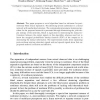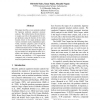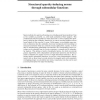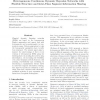3607 search results - page 145 / 722 » Learning with structured sparsity |
ECAL
2005
Springer
14 years 1 months ago
2005
Springer
The complexity, variation, and change of human languages makes evident the importance of representation and learning in the acquisition and evolution of language. For example, anal...
ISNN
2005
Springer
14 years 1 months ago
2005
Springer
Abstract. This paper proposes a novel algorithm based on informax for postnonlinear blind source separation. The demixing system culminates to a neural network with sandwiched stru...
EMNLP
2008
13 years 9 months ago
2008
This paper describes a new automatic method for Japanese predicate argument structure analysis. The method learns relevant features to assign case roles to the argument of the tar...
CORR
2010
Springer
13 years 8 months ago
2010
Springer
Sparse methods for supervised learning aim at finding good linear predictors from as few variables as possible, i.e., with small cardinality of their supports. This combinatorial ...
ICML
2010
IEEE
13 years 6 months ago
2010
IEEE
Classical dynamic Bayesian networks (DBNs) are based on the homogeneous Markov assumption and cannot deal with heterogeneity and non-stationarity in temporal processes. Various ap...




